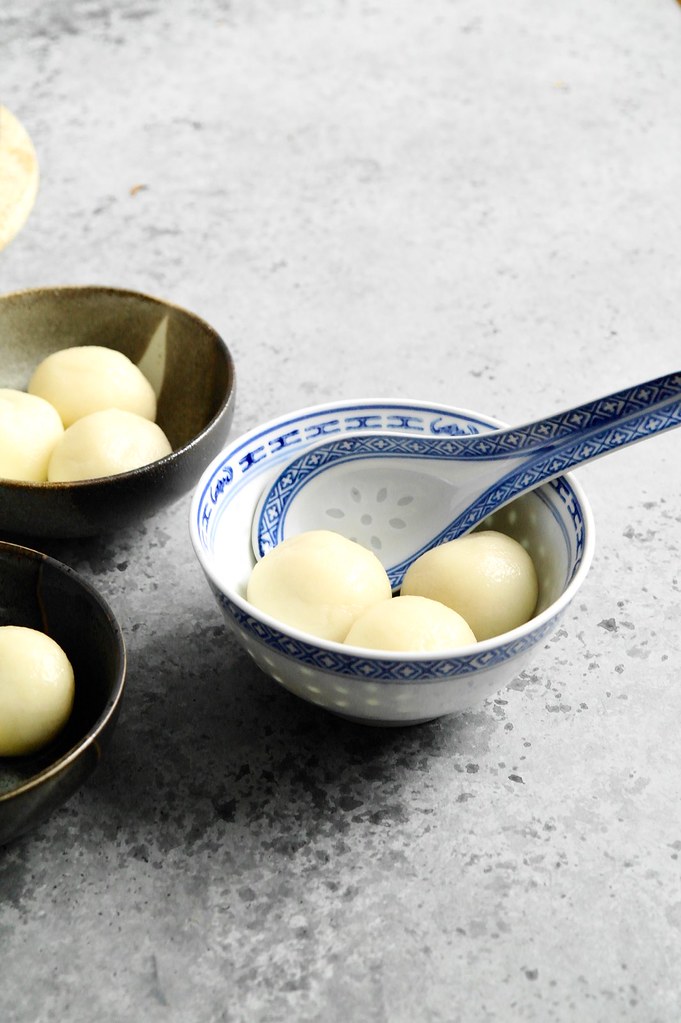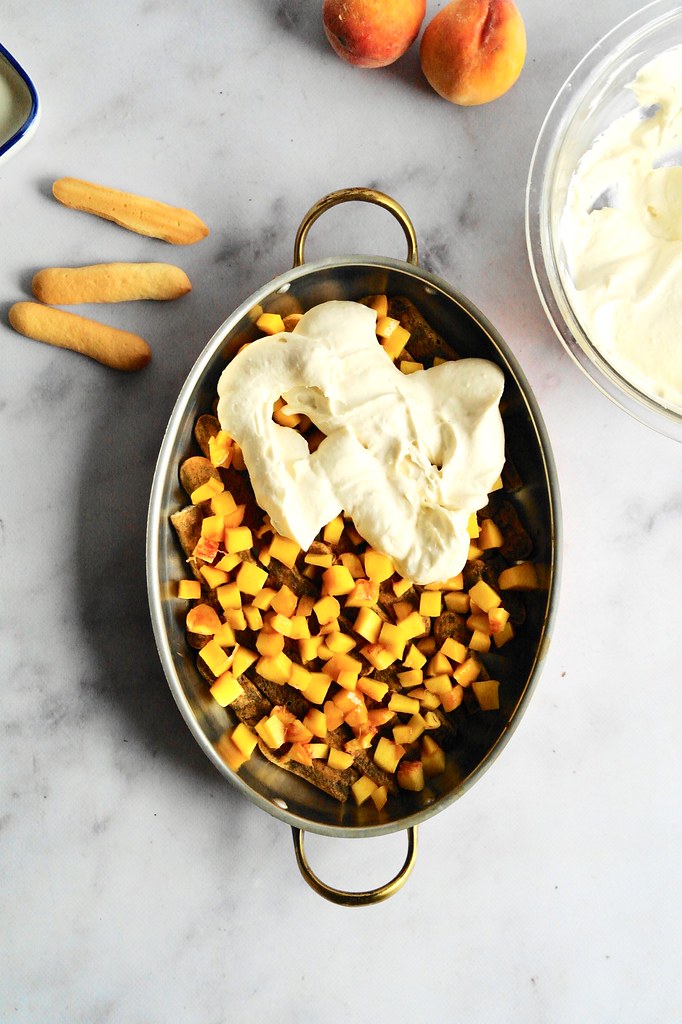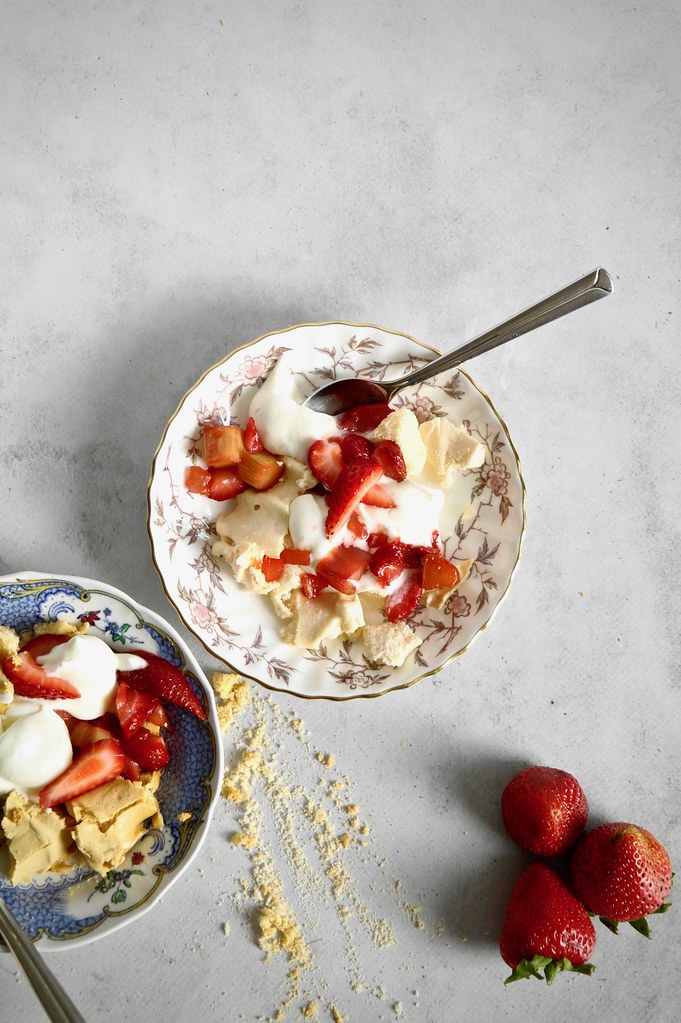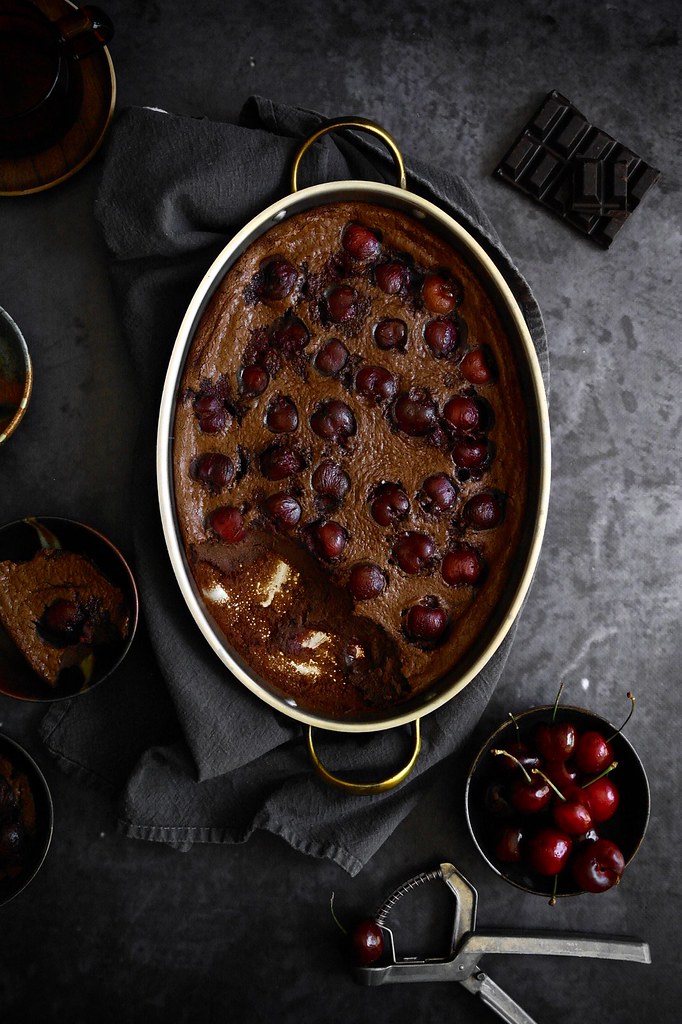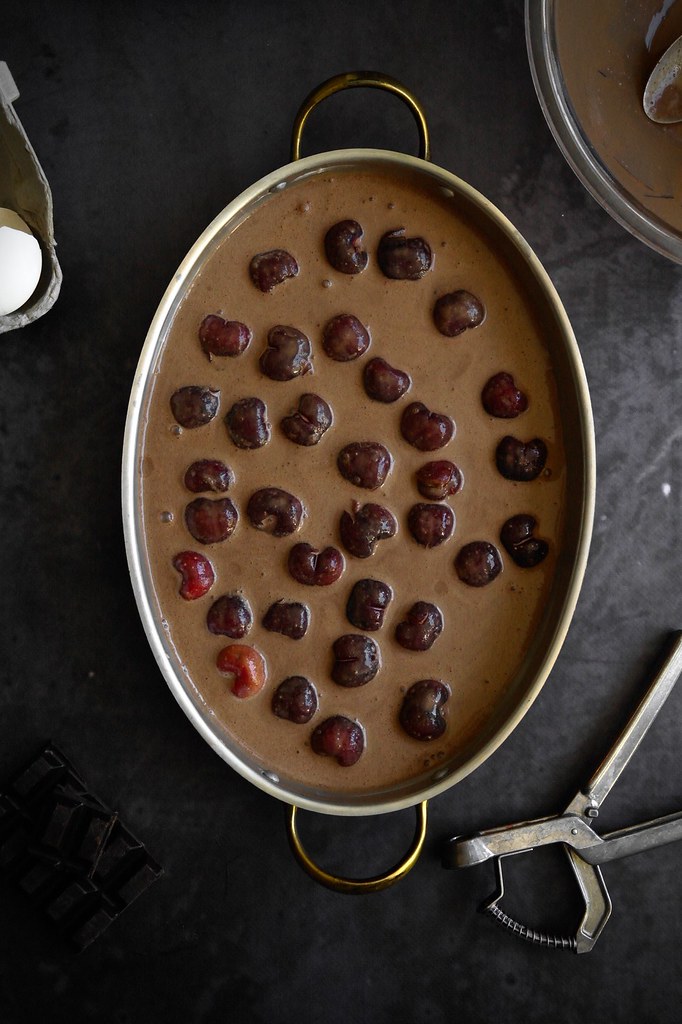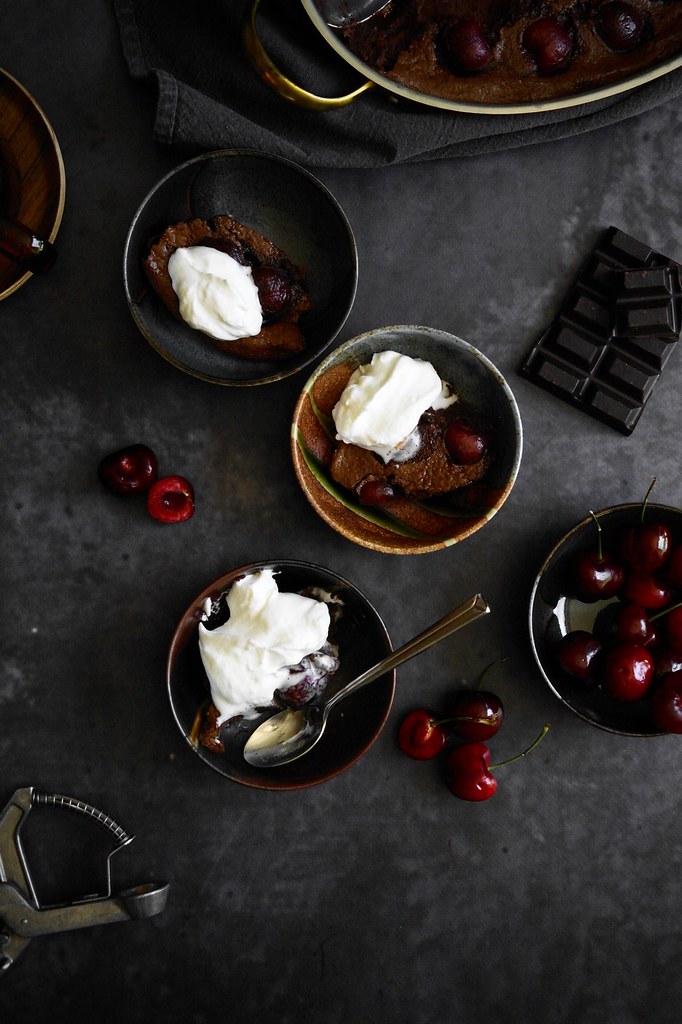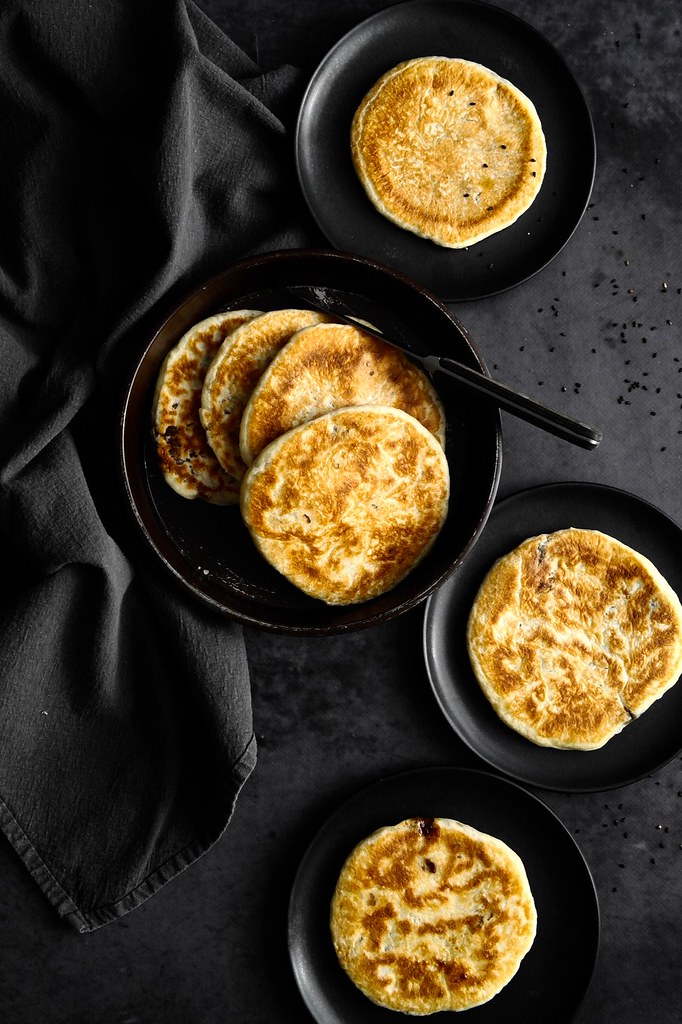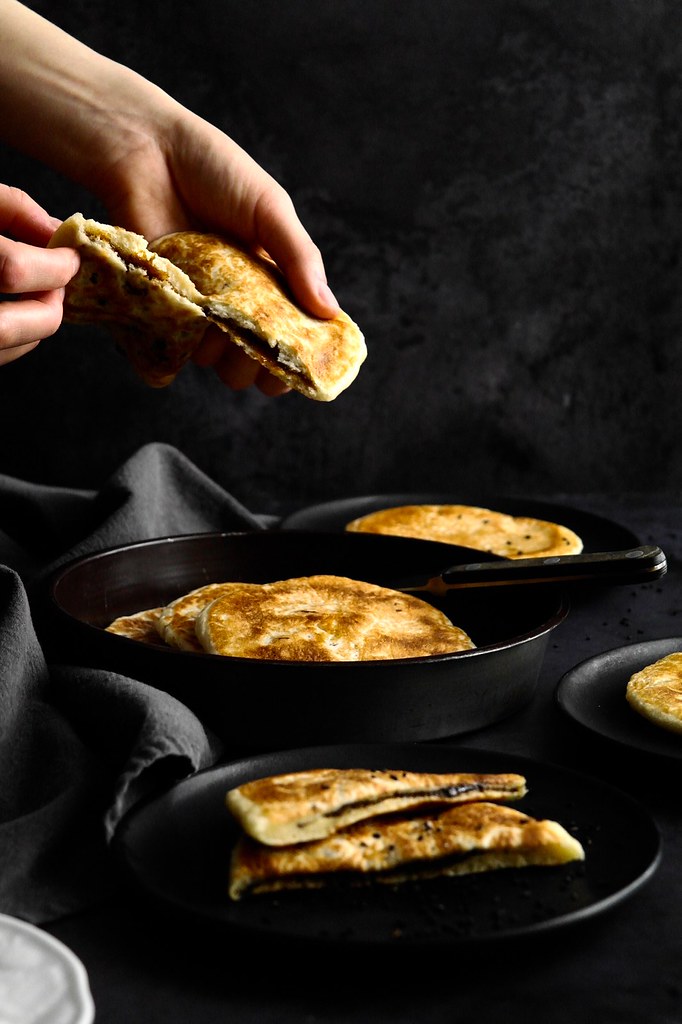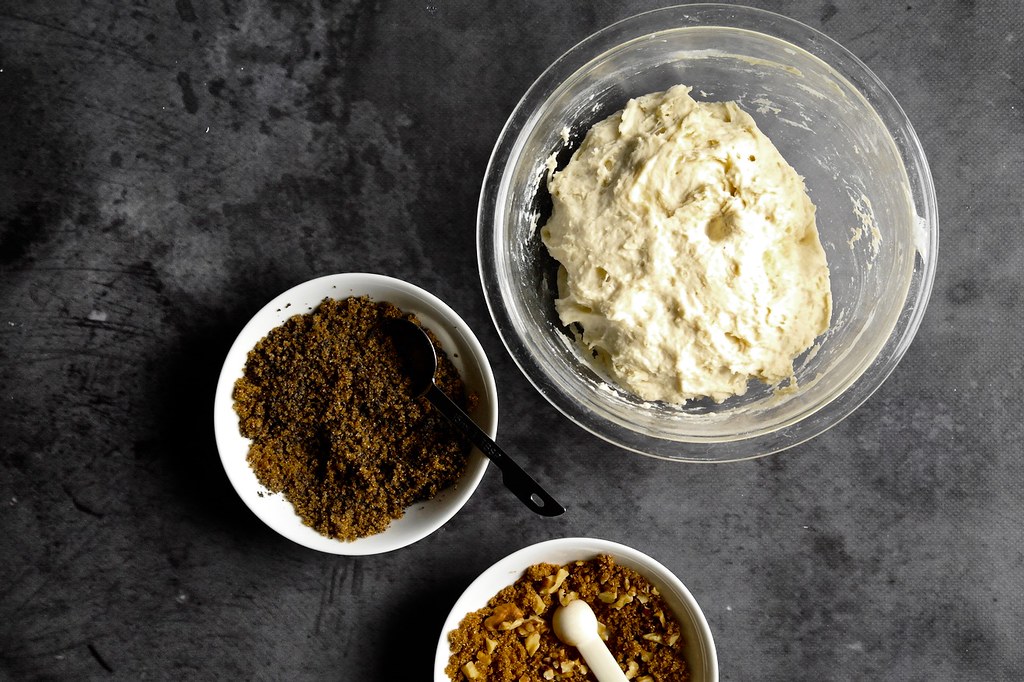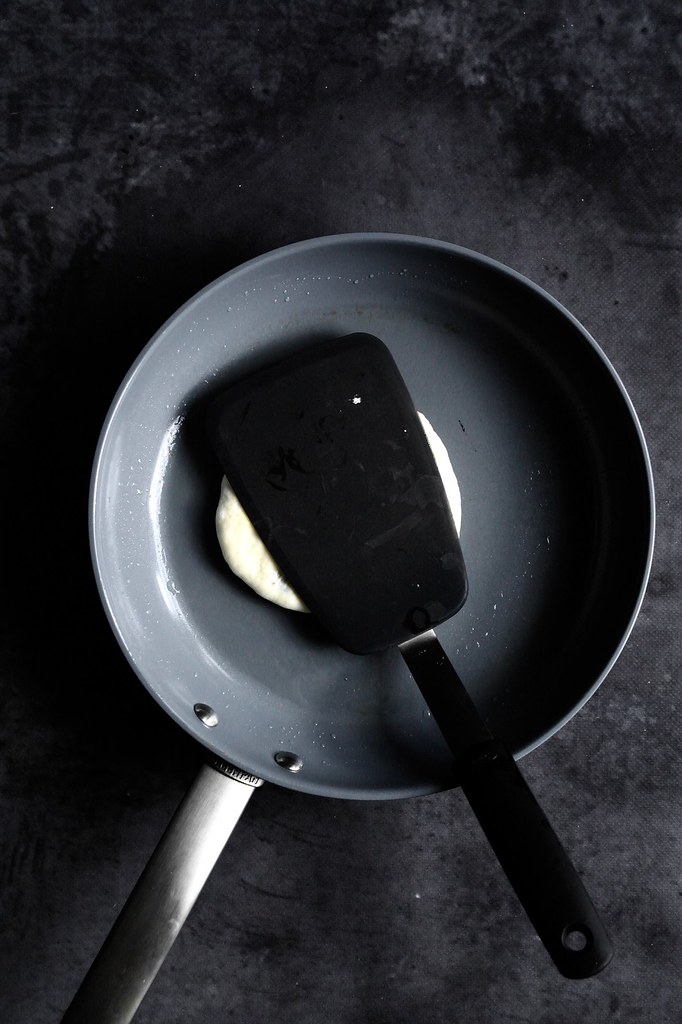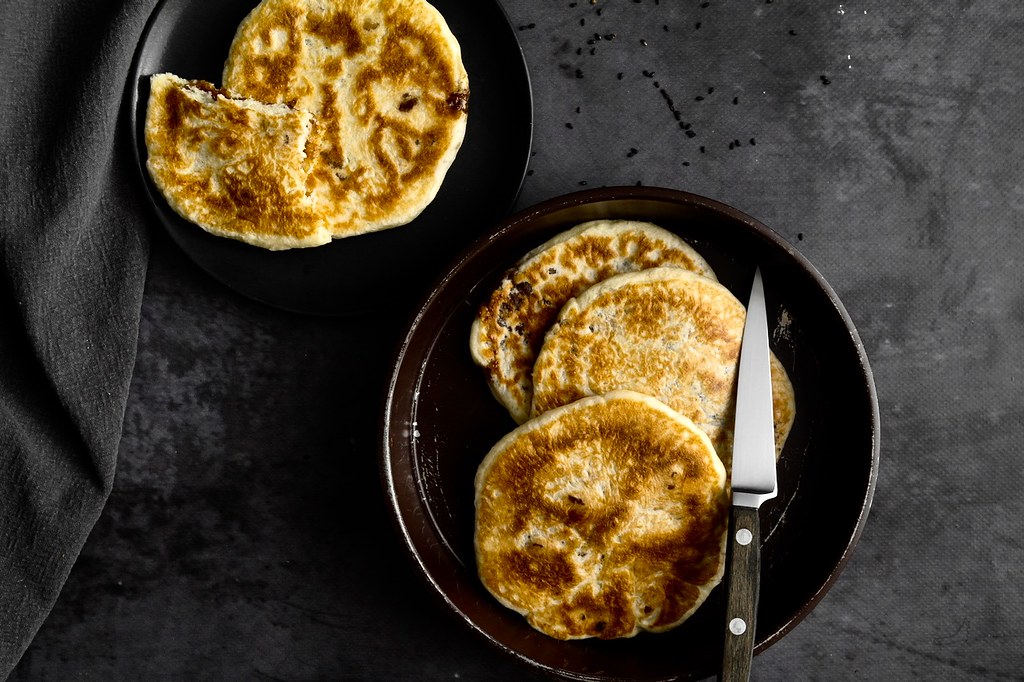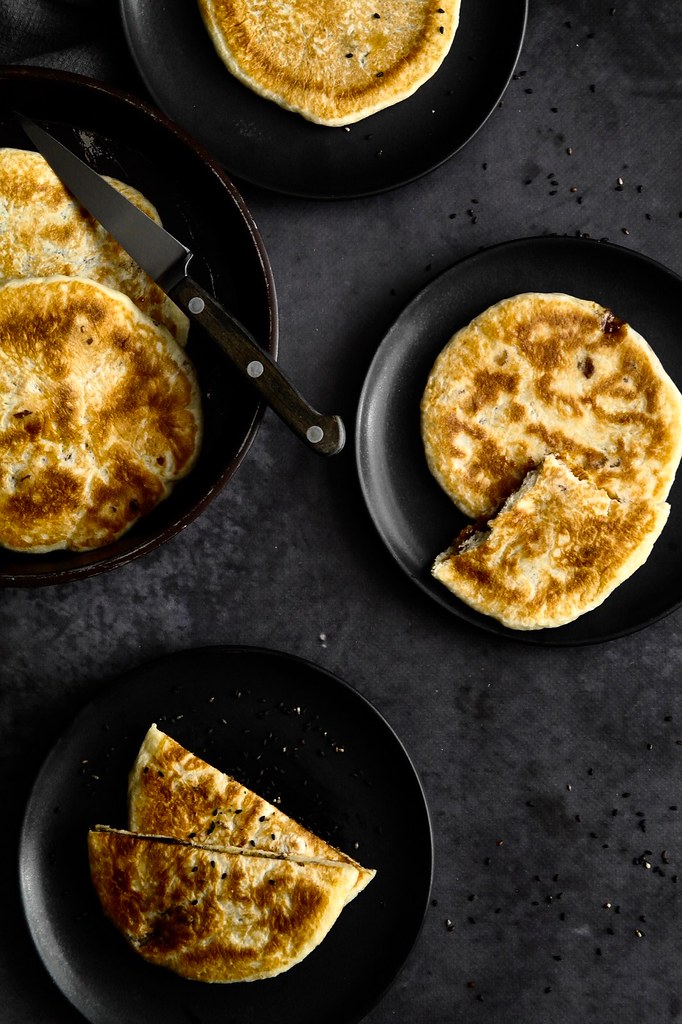
I once made some black sesame-filled hotteok, the filling reminding me of black sesame tang yuan. Getting a bit topsy-turvy, here is the inverse: a tang yuan with a brown sugar, walnut and cinnamon filling inspired by hotteok!
To go with it: a soup inspired by sujeonggwa, a Korean punch made with cinnamon, ginger and usually red dates and dried persimmons. As I already had cinnamon in the filling, I focused on the ginger, persimmon and red dates. Also rather untraditional, instead of serving it cold, I kept the soup warm – a warm liquid is best for serving tang yuan in as it keeps the rice flour dough soft. Overall, I found it to be a cozy, wintery take on tang yuan and wonderfully warming!
This dessert does draw on a mix of inspiration so I want to be sure to link to some recipes which I used for reference to acknowledge – and besides, perhaps it’s just one particular aspect of this dessert which strikes your interest! Tang yuan (Woks of Life) (and of course, many other cultures have similar and different sweet rice cakes – songpyeon for instance, is a Korean filled moon-shaped rice cake), hotteok (Korean Bapsang) and sujeonggwa (My Korean Kitchen) were the main sources of inspiration.
Happy winter!

brown sugar walnut tang yuan with persimmon ginger soup
Tang yuan adapted from Woks of Life and Fuscia Dunlop’s Every Grain of Rice. Hotteok inspiration from Korean Bapsang and sujeonggwa inspiration from My Korean Kitchen.
persimmon ginger broth
- 1 3/4 cups water
- a few slices fresh ginger
- 4 dried red dates
- 2 dried persimmons, cut into wedges or chunks
- 1 tbsp granulated sugar
hotteok tang yuan filling
- 15g all-purpose flour
- 30g brown sugar
- 30g butter, lard or coconut oil, melted
- `1/8 tsp ground cinnamon
- pinch salt
- 1 generous tbsp chopped toasted walnuts
tang yuan dough
- 100g glutinous rice flour
- 75-95g lukewarm water
- 1/2 tsp oil
For the broth, combine all the ingredients in a small saucepan. Bring to a boil and simmer for 5 minutes, then cover and set aside to steep while you make the tang yuan.
For the filling, place the flour in a small dry pan over medium heat. Cook, stirring constantly, until the flour smells a bit toasted and cooked, around 5 minutes. Remove from the heat and transfer to a small bowl. Add the brown sugar, melted butter/lard/coconut oil, cinnamon, salt and chopped walnuts. Stir together, then place in the fridge to firm up.
Once firmed, divide the filling into 12 portions (about 6g each) and roll each into a little ball. Return to the fridge to keep firm until ready to assemble. (Initially I did roll mine in more rice flour as seen in the photographs, but I found it easier to assemble the tang yuan without doing that.)
For the dough, stir together the rice flour, water and oil. Begin with 75g of water and add more as needed to form a soft dough with a putty-like consistency. Divide the dough into 12 portions (about 16-17g apiece) and roll each into a ball.
To assemble, take the filling from the fridge. Poke your thumb into a ball of dough to create a cup like shape and fill with a portion of filling. Push the surrounding bits of dough up to completely cover the filling and roll between your palms into a smooth sphere. If the dough starts to crack a bit, moisten your palms with a dab of water. Repeat with the remaining portions until all the tang yuan are filled.
Fill a medium saucepan with water and bring to a boil. Drop in the tang yuan, bring back to a boil and then set to a simmer. Cook for about 10 minutes or until the tang yuan are soft and the filling is melted. Meanwhile, reheat the persimmon ginger soup.
To serve, scoop 2-3 tang yuan into a bowl and cover with a ladleful or two of the warm soup.




